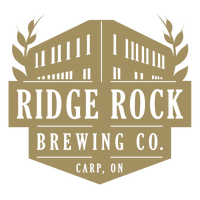Longworth: De-stressing with meditation
Times are a-changing and many find our current situation overwhelming, filled with anxiety and stress created by the COVID-19 coronavirus.

Wouldn’t it be wonderful if we could rise above all these emotional upheavals? Take control of our life, so to speak. Create a space where we can live life fulfilled, without worry and anxiety.
Meditation might be the answer during these troubling times. Meditation is a commitment to what is real, where we leave our thoughts behind and discover a simplicity of the heart – a creative response to life.
Meditation is a mind and body exercise that increases calmness, improves emotional wellbeing and reduces stress and anxiety.
An activity available at any time, invaluable and can be customized to our precise needs. And these invaluable benefits do not end when the pandemic subsides.
Using a meditation practice can result in permanent positive changes in your thoughts, actions and general outlook on life.
Types of Meditation
Meditation is an encompassing term for the many ways to a relaxed state of being. There are many types of meditation and numerous relaxation techniques that follow meditation practices. All share the same goal of achieving stress-free inner peace and well-being. The list that follows are the most popular techniques.
- Guided meditation. Sometimes called guided imagery or visualization, with this method of meditation you form mental images of places or situations you find comfortable or relaxing. You try to use as many senses as possible, such as smell, sight, sound and texture. You may be led through this process by a guide or teacher.
- Mantra meditation. In this type of meditation, you silently repeat a calming word, thought or phrase to prevent distracting thoughts.
- Mindfulness meditation. This type of meditation is based on being mindful or having an increased awareness and acceptance of living in the present moment. In mindfulness meditation, you broaden your conscious awareness. You focus on what you experience during meditation, such as the flow of your breath. You can observe your thoughts and emotions but let them pass without judgment.
- Qi gong. This practice generally combines meditation, relaxation, physical movement and breathing exercises to restore and maintain balance. Qi gong (CHEE-gung) is part of traditional Chinese medicine.
- Tai chi. This is a form of gentle Chinese martial arts. In tai chi (TIE-CHEE), you perform a self-paced series of postures or movements in a slow, graceful manner while practicing deep breathing.
- Transcendental Meditation. Transcendental meditation is a simple, natural technique. In transcendental meditation, you silently repeat a personally assigned mantra, such as a word, sound or phrase, in a specific way. This form of meditation may allow your body to settle into a state of profound rest and relaxation and your mind to achieve a state of inner peace, without needing to use concentration or effort.
- Yoga. You perform a series of postures and controlled breathing exercises to promote a more flexible body and a calm mind. As you move through poses that require balance and concentration, you’re encouraged to focus less on your busy day and more on the moment.
It is best to find your own method of meditating. To start, the simpler, the better. Practice it at the same time and preferably every day.
Here is an informative video you might find useful as a newbie: Mayo Clinic.
As a novice, considering meditation during these troubling times, I recommend a simple way to start your journey. Developed by Dr. Andrew Weil, a yogic pranayama technique, a way to regulate your breathing to counts of four, seven and eight when feeling stressed or anxious. Although not advertised as meditation, I would recommend it as a prep, akin to a warming-up exercise.
The 4-7-8 Breathing Exercise is easy to learn, takes almost no time to practise, requires no equipment and can be done anywhere. Although you can do the exercise in any position, sit with your back straight while learning the exercise. Place the tip of your tongue against the ridge of tissue just behind your upper front teeth and keep it there through the entire exercise. Exhale completely through your mouth, making a whoosh sound.
- Close your mouth and inhale quietly through your nose to a mental count of four.
- Hold your breath for a count of seven.
- Exhale completely through your mouth, making a whoosh sound to a count of eight. This is one breath.
- Now inhale again and repeat the cycle three more times for a total of four breaths.
Note that you always inhale quietly through your nose and exhale audibly through your mouth. The tip of your tongue stays in position the whole time. Exhalation takes twice as long as inhalation. The absolute time you spend on each phase is not important; the ratio of 4:7:8 is important. If you have trouble holding your breath, speed the exercise up. With practice you can slow it all down and get used to inhaling and exhaling more and more deeply.
Use the following, you will find it much easier than continually counting: four-seven-eight.
Practice this breathing technique every day, recommended two sessions per day, repeating for only four breath cycles at a time. Use it whenever anything upsetting happens. Use it whenever you are aware of internal tension. Use it to help you fall asleep. And use it for coping and de-stressing during the COVID-19 pandemic.
Although not an expert, do contact me if you require further elaboration or visit our website at https://turnsio.com.
For 40 years Richard Longworth worked as a systems analyst and university professor at Capilano University teaching math, information technology, and system analysis and implementation. Longworth has published three books Reflections on Life Issues, Turning the Self Inside Out, and Harnessing the Internet into a Knowledge Framework – all related to technology and trends in the industry.



